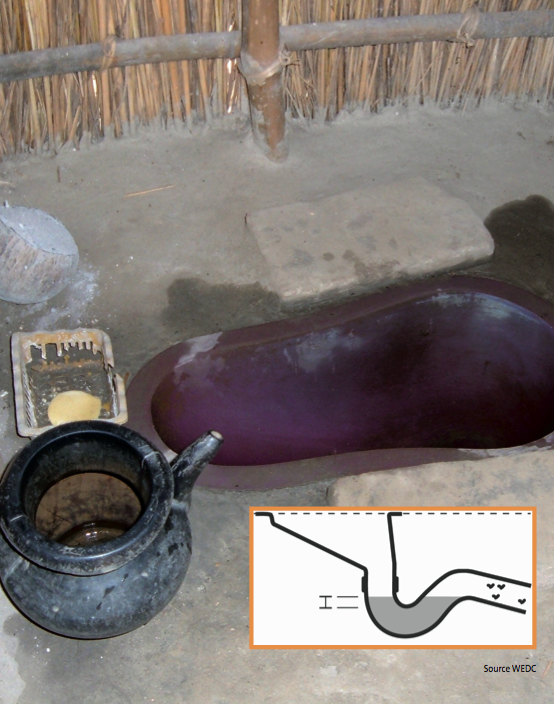Pour flush slabs
Pour flush slabs (squatting pans) have a U-shaped facility partly filled with water under the slab. This U-trap overcomes problems with flies, mosquitoes, and odour by serving as a water seal. After use, excreta is manually flushed by pouring water into the pan with a scoop. About 1 to 4 litres of water is required for each flush. The amount of water required depends mainly on the design of the toilet and U-trap. Toilets can be made from plastic and ceramic, or from galvanized sheet metal. Note: The principle of pour flush slabs can also be applied to the faeces compartment of urine diversion toilets.

| Advantages | Disadvantages |
|---|---|
| High level of convenience for the user. The design reduces the need to handle fresh excreta. |
The U-trap can easily become blocked. Requires small amounts of water for flushing. |
Costs
- Ceramic pour flush pan US$ 4- 8 (Tamil Nadu, India, 1999).
- `Easyflush' polypropylene pan US$ 2 (Chennai, India).
- Maintenance costs - No expenses usually, except for the cost of the water.
Applying conditions
- Pour flush slabs can only be applied in regions where water is available for flushing, and the infrastructure is available or can be built to manage wastewater. This may require the construction of a (septic) tank / biogas digester / pit and / or small diameter sewerage.
- These slabs are especially appropriate in densely populated areas where dry handling of excreta isn't socio-cultural appropriate.
- Pour flush slabs are suitable where people use water for anal cleaning and squat to defecate.
- No material that should obstruct the U-trap should be thrown in the toilet. Bulky material used for anal cleaning can't be flushed through the U-trap.
- The U-trap should be checked monthly for blockages.
External links
- General information about Pour flush slabs www.who.nl
- General information www.irc.nl
- General information www.wsp.org
